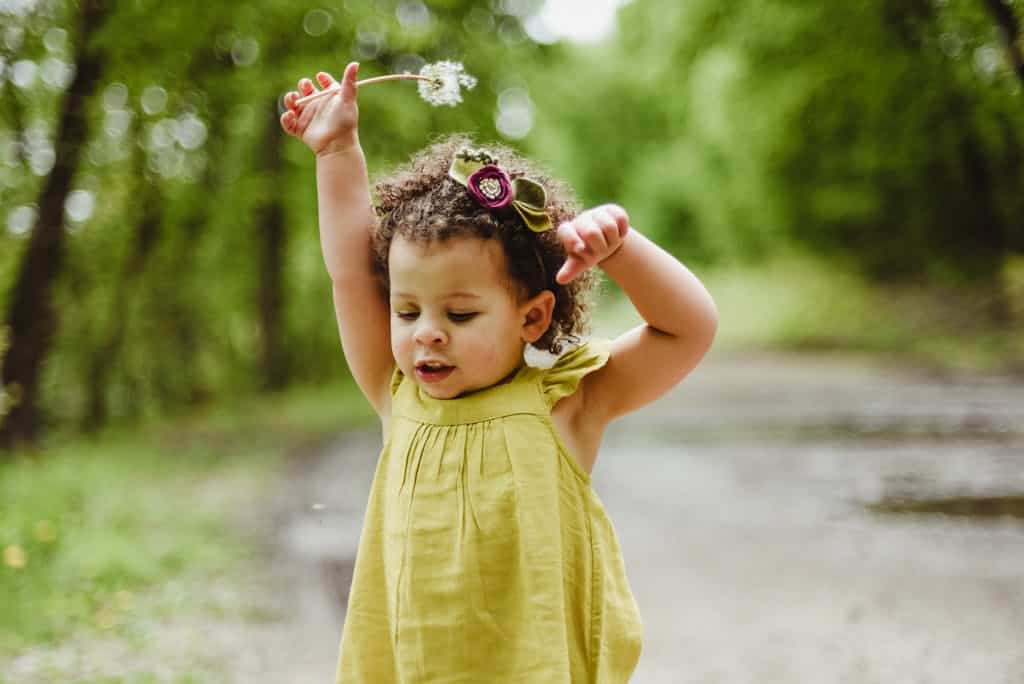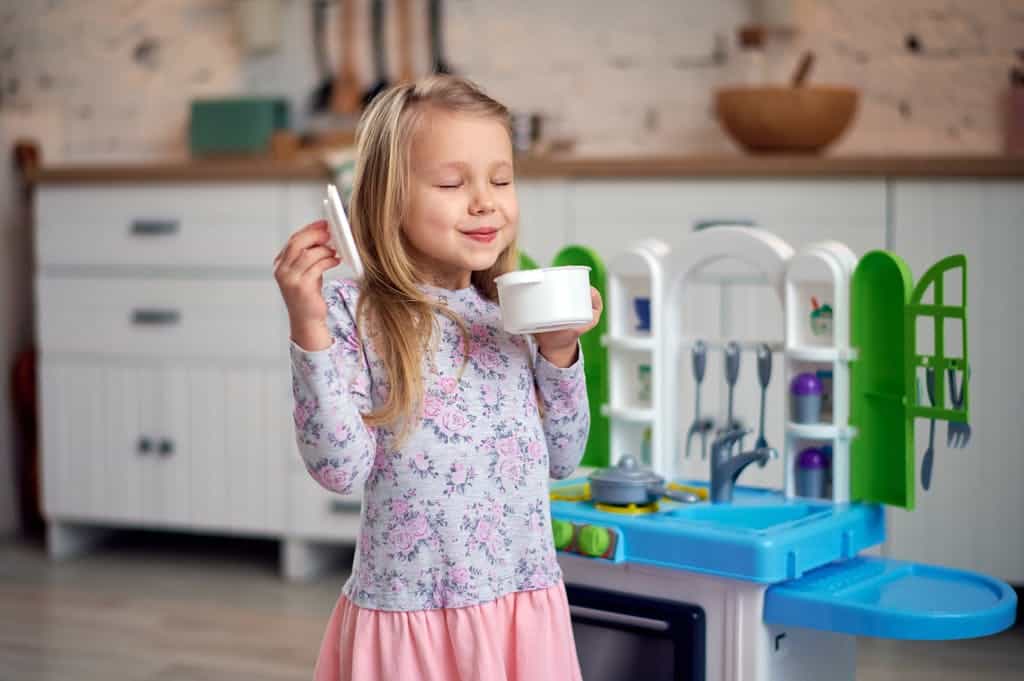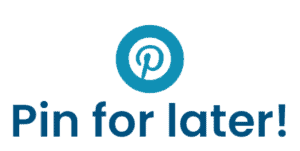Thriving in the “Terrible Twos”: A Guide to Understanding and Managing Toddler Behavior
We’ve all heard the phrases: “Terrible Twos,” “Threenager,” and my personal favorite, “the f* you fours.” These terms can leave new parents bracing for what’s to come during the toddler years.

Play. Learn. Thrive.™ only endorses products we authentically love and use. Some of the product links in this post may be affiliate links. That means that if you click them and make a purchase, this site makes a commission. Play. Learn. Thrive.™ is also an Amazon Associate. As an Amazon Associate, we earn from qualifying purchases. It will have no impact on the price you pay or the experience of your purchase.
I always joke with friends, especially those just thinking about having kids, that babies are the “calm before the storm”—giving us time to build up that deep, unconditional love before they transform into boundary-pushing little dictators.
I won’t lie: the toddler and preschool years can be tough.
As a parent, I’ve found myself on the verge of tears many times, watching the clock inch toward bedtime while also dreading the bedtime battle that I knew was coming.
But over time as a mom to four kids, I’ve learned that with the right mindset and strategies, we can manage the “Terrible Twos” (and beyond!) with grace and even find joy in the process.

What Are the “Terrible Twos”?
The phrase “Terrible Twos” refers to a developmental phase where toddlers, around age two, begin to assert their independence.
During this stage, they’re discovering that they have their own thoughts, opinions, and desires—which don’t always align with what we, as parents, want them to do!
This can result in power struggles, tantrums, boundary testing, and more challenging behavior. But it's important to understand that the “Terrible Twos” are also a time of great growth and learning for your child.
Reframing the “Terrible Twos”
Yes, the toddler years are challenging, but the way you approach this phase can make a huge difference.
We’ve all heard about the power of positive thinking, right? Well, it works both ways. If you go into the “Terrible Twos” expecting the worst, that's likely what you'll get.
But if you approach this stage with the understanding that your child is learning, growing, and testing boundaries, you can navigate it with much more patience and perspective.
Here’s a helpful tip: lower your expectations a little.
Your two-year-old has only been on this earth for 24 months! At this age, they *are* supposed to test you, and they *are* supposed to push boundaries. But that doesn't mean you let them get away with everything. It's about balancing understanding with setting firm, clear boundaries.

The Importance of Setting Boundaries for your Toddler (and beyond)
Boundaries are crucial during the “Terrible Twos.” When you set healthy boundaries, you help your child feel safe and secure.
But boundaries aren’t just for your toddler; they also allow you to enjoy parenting a little more because you’re not constantly battling with your child over every little thing.
Think of a boundary as an invisible line that both you and your child need to respect. The “Terrible Twos” are the perfect time to start setting these limits.
By doing so, you’re teaching your child the difference between acceptable and unacceptable behavior.
The key is consistency—don’t waver on your boundaries because your child is upset or you’re feeling overwhelmed. Children thrive on predictability, and firm boundaries provide that structure.
Why Do Toddlers Test Boundaries?
Toddlers are wired to test boundaries—it's how they learn. When your two-year-old pushes the limits, they're really asking, “What happens if I do this?” or “Where is the line, and will my parent stick to it?”
If you are inconsistent, they will keep testing because they don’t know where that line truly exists. That’s why it can feel like they’re “acting out” or “pushing your buttons”—they’re simply trying to figure out the rules of their world.
Tantrums vs. Meltdowns: What’s the Difference?
Understanding the difference between a toddler tantrum and a meltdown can be a game-changer for parents navigating this stage.
What Is a Toddler Meltdown?
A meltdown occurs when your child is overwhelmed—typically due to hunger, tiredness, overstimulation, or illness. A meltdown is an emotional response to being physically or emotionally maxed out. During a meltdown, your child may cry, scream, kick, or become non-verbal. The best approach is to remove them from the situation, help them calm down, and guide them in recognizing their physical needs.
What Is a Toddler Tantrum?
A tantrum is a reaction to not getting what they want. When you say “no” to that extra cookie or it's time to leave the playground, a tantrum may follow. The key to handling tantrums is consistency. Don’t give in. Acknowledge their feelings, but hold firm on your boundary. Over time, they will learn that tantrums don’t lead to getting their way.

50 Simple Screen-Free Learning Activities for Curious Kids
These 50 hands-on activities help children develop problem-solving skills, creativity, and real-world knowledge—without needing a screen. Designed to encourage self-directed play, hands-on discovery, and deep learning, this guide gives you a simple way to turn everyday moments into powerful learning opportunities.
Why You Shouldn't Use Screens to Pacify Tantrums
When your toddler is in the middle of a big reaction, it can be tempting to reach for a quick fix, like handing over a tablet or phone to distract them.
Many parents resort to screens during this phase as a way to quiet their child or diffuse a situation, but here's why that isn't the best long-term strategy.
Screens can seem like a magical solution, instantly calming a child in the throes of a tantrum.
However, using screens to pacify emotions can actually hinder your child’s ability to develop healthy emotional regulation skills. When a toddler is given a screen during a tantrum or meltdown, they miss the opportunity to learn how to process and manage their emotions.
Why Screens Aren’t the Answer
Emotional Avoidance: By using screens as a distraction, your child is essentially avoiding the emotions they are feeling. Learning to navigate feelings like frustration, anger, and sadness is an essential part of childhood development. Screens prevent them from experiencing and understanding these emotions fully.
Delayed Emotional Development: Children need to practice managing their emotions in real-world situations. If screens are used to stop every tantrum, they don't learn how to calm themselves, which is a skill they will need as they grow older.
Creates Dependence: Over time, toddlers may begin to expect screens whenever they're upset, which can create an unhealthy reliance. Instead of developing coping mechanisms, they rely on external distractions to soothe themselves.
Interrupts Bonding: During these challenging moments, it’s crucial to engage with your child. By staying present and helping them through their emotions, you strengthen the parent-child bond. Screens, on the other hand, act as a barrier between you and your child.
What to Do Instead of Using Screens
Acknowledge Their Feelings: Recognize and name their emotions. Say, “I see you’re feeling frustrated because you want more playtime. It’s okay to feel that way.”
Teach Self-Regulation Techniques: Help them practice deep breathing or counting to ten. These small techniques can be used to calm their bodies and minds.
Offer a Time-In: Stay with them, provide comfort, and help them process their emotions. This teaches them that it's okay to feel upset and that they can come out the other side.
By avoiding the temptation to use screens during the “Terrible Twos,” you're setting your child up for long-term emotional success. They learn that feelings aren't something to be avoided, but something to be understood and worked through.
9 General Strategies for Managing “Terrible Twos” Behavior
Dealing with the “Terrible Twos” can feel overwhelming, but there are strategies to help make it more manageable:
Get on their level: Towering over a little kid can be intimidating. Get down to eye level when speaking to them, which can help them feel more connected and less defensive.
Acknowledge their feelings: Toddlers are learning about emotions. Help them identify what they’re feeling, whether it's sadness, frustration, or anger. Let them know it’s okay to feel that way.
Let them have big feelings: Rather than distracting them from their emotions, help them pay attention to what they’re feeling. This helps them learn to manage those emotions later on.
Stay calm: Don’t let their feelings dictate yours. The more calm and in control you are, the better you can help them through their tough moments.
Use quiet communication: When things escalate, lower your voice. Kids tend to quiet down to hear what you're saying.
Teach calming techniques: Help your toddler learn how to calm down by teaching deep breathing or other self-regulation strategies.
Opt for time-ins, not time-outs: Time-outs can make a child feel isolated and ashamed. Instead, try a “time-in” where you calmly help them process their emotions and find a solution.
Be consistent: Whether it’s enforcing a boundary or sticking to your routine, consistency is key. Children feel more secure when they know what to expect.
Find humor in the chaos: Sometimes, you just have to laugh. Toddlers will test you, but if you can find humor in their antics, it will make the “Terrible Twos” a little more bearable.
Final Thoughts on the “Terrible Twos
While the “Terrible Twos” can be a difficult time for both you and your child, they are also a period of tremendous growth and discovery. By setting boundaries, being consistent, and helping your child understand their emotions, you’ll not only survive these challenging years—you’ll thrive.
Inspired by this post? Be sure to subscribe download my free Screen-Free Starter Kit! For more insights and resources on raising confident, lifelong learners, be sure to follow me on Instagram – can't wait for you to join me!







